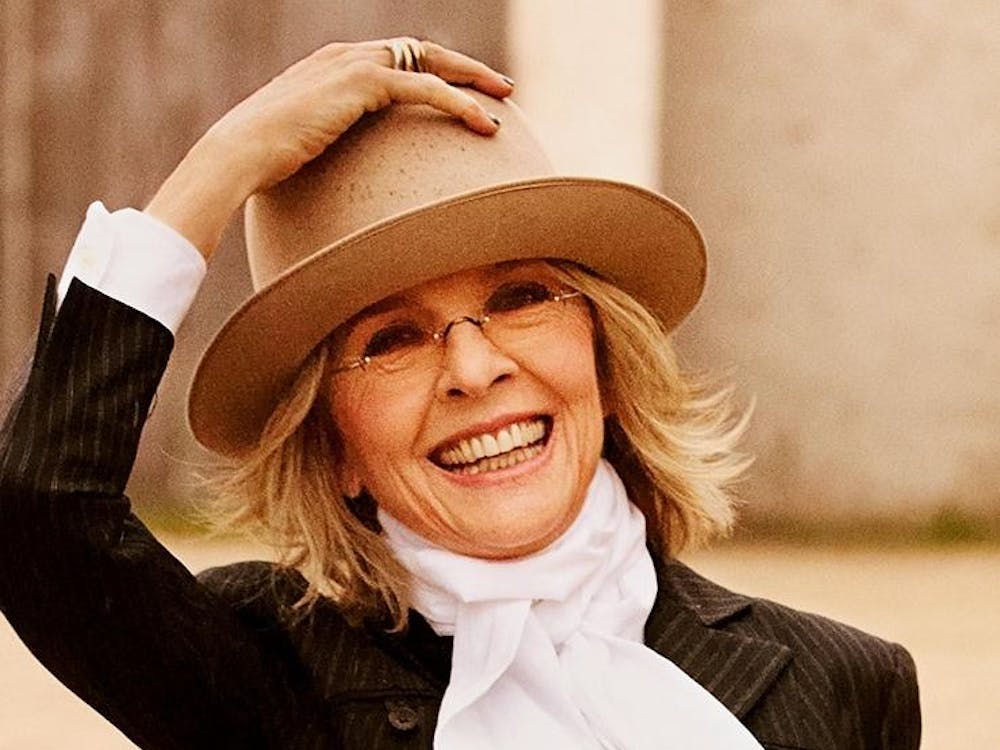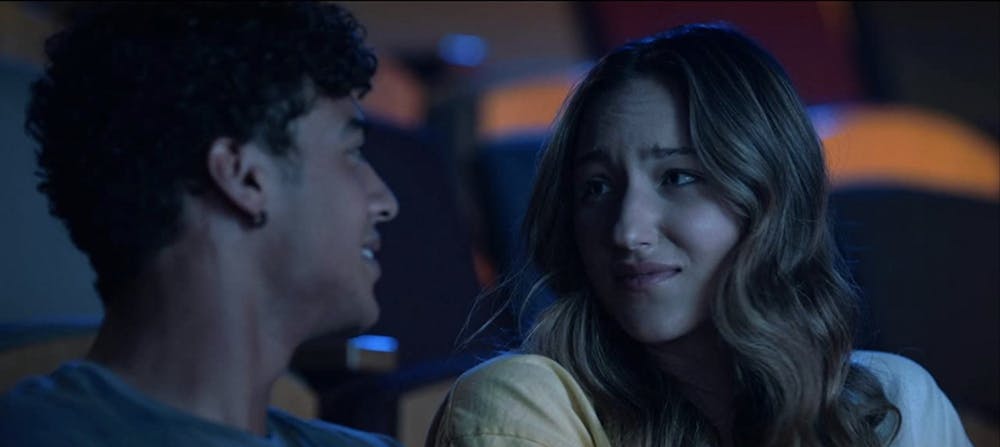Warning: This review contains spoilers for Tall Girl 2.
Listen, I love rom-coms. Two lovers kissing in the rain? Yes, please. Unbelievably public, ridiculous romantic gestures? I could watch it all day. In fact, I’m also a huge fan of some of the dumber tropes too, like “tall one likes short one,” which may or may not have been the sole reason I actually enjoyed the first Tall Girl movie. Sure, when I watched the first movie I realized that Dunkelman carrying around that crate was definitely weird and creepy in one too many ways, but I still couldn’t help but squeal in excitement when he stood on it to kiss Jodi at the end.
You’d think I’d be all over the sequel. I mean, more cute moments that let me project onto the two main characters’ love life? More unnecessary drama? TWO musical numbers (three if you count the karaoke scene)? Sign me up. Instead what I was given was a cliché-filled, attempting-to-be-relatable, uninspiring, one hour and thirty-seven minute-long film that somehow managed to be even more uneventful than the first.
Yet Another Teenage Break-up
Tall Girl 2 begins with the main character, Jodi Kreyman, at the peak of her high school career. She’s got a loving boyfriend who completely supports her, she’s constantly getting compliments on how she looks, and she’s insanely popular now— favored enough to try out for the school’s musical, Bye Bye Birdie, and secure the lead role. But, in classic Netflix rom-com fashion, that all falls apart in the blink of an eye. Suddenly, Jodi’s relationship has fallen to pieces, and her confidence shatters.
Just off the top of my head, I can think of two different Netflix series where the main couple break-up and a new guy is introduced to lead the girl away (The Kissing Booth and To All the Boys I’ve Loved Before). In the case of Tall Girl 2, it was Jodi and Dunkelman’s relationship, and her handsome, flirtatious Bye Bye Birdie co-star, Tommy, was the new love interest. Netflix has employed this same trope at least three times, including this film, but I’d be willing to bet there’s more that I just haven’t seen yet. And even I, the person who re-watches the same scenes over and over again just to pretend I’m watching it for the first time, was sick of it.
The other relationships in this film, whether romantic or platonic, were just okay. There was Jodi’s fairly forgettable friend, Fareeda, who was now randomly in love with Stig even though they barely interacted throughout the whole first movie. It’s fair to stipulate that they were just thrown together to produce another happy ending. There was Jodi’s sort of ex-bully, Kimmy, who was now working on being less selfish because her one, even more forgettable friend, Schnipper, was encouraging her to do so. The best relationship in this movie was Dunkelman and the Mohlin siblings (oh yeah, there’s two of them now), Stig and Stella. First, he restores his friendship with Stig, and then—in a wonderful turn of events—he gains a camaraderie with Stig’s sister, Stella. These two are strangely fantastic together. They’re funny, weird, and overall just give off ‘best friend energy.’ It's truly the saving grace that this movie needed.
All the Youths are Anxious Now, Right? Right?
Sometimes I wish the world had actually ended in 2012 before all this. Or maybe even earlier, so we could have all been wiped out before Tall Girl 2 even had a chance to be conceptualized. In a Screenrant interview, director Emily Ting said “not everyone can relate to being tall. But everyone can relate to having self-doubt and having that negative self-talk.” While she’s not wrong (as this article concurs), the film fell short of an actual representation of anxiety and intrusive thoughts, opting for a shallow interpretation instead. This added aspect of struggling with mental health could have totally been a beautiful, inspiring part of the film. But no, why would Netflix do that when they could barely try and get the same amount of viewers?
Throughout the movie, Jodi experiences a “voice” in her head telling her that she’s not good enough, that she doesn’t deserve happiness, etc. She also has two on-screen panic attacks that last all of five seconds. And, yes, everybody’s different, but this was probably one of the tamest versions of anxiety that I have ever seen. She has self-doubt and gets nervous about performing? That’s it? The story is that she’s very normal and she doesn't even have a well-developed arch with her mental health? Wow. Thanks. Truly inspirational. I’ve seen films before where mental health is wonderfully portrayed, detailing the hardships and suffering associated with dealing with extreme anxiety for the first time and learning to overcome it. With Tall Girl 2’s mostly young audience, this could have been a tremendous opportunity to teach the viewers about mental illness and ways they could tame it, but apparently we can’t have nice things.
It was good at the end when Jodi learned how to overcome that voice in her head by tuning it out and telling herself she was deserving of love and happiness, but I’m still irritated by the surface-level portrayal of a heightened version of anxiety. It would have been much more believable if Jodi experienced more anxiety symptoms. At least then the subplot of a teenager wrestling with negative feelings would have felt more real. But, the writers couldn’t risk that because then not everyone might relate. Everyone has felt nervous about something scary happening, like how Jodi was going through a break-up and also performing on-stage for the first time, but not everyone has an anxiety disorder. Newsflash people: not everything needs to be relatable, and if one of the major plots of your movie is about battling with mental health, the least you could do is go all in.

Featured Images: IMDb, IMDb, IMDb, IMDb, IMDb
Sources: Byte, Screenrant, Healthline
Contact Riley Nower with comments at rlnower@bsu.edu.



















